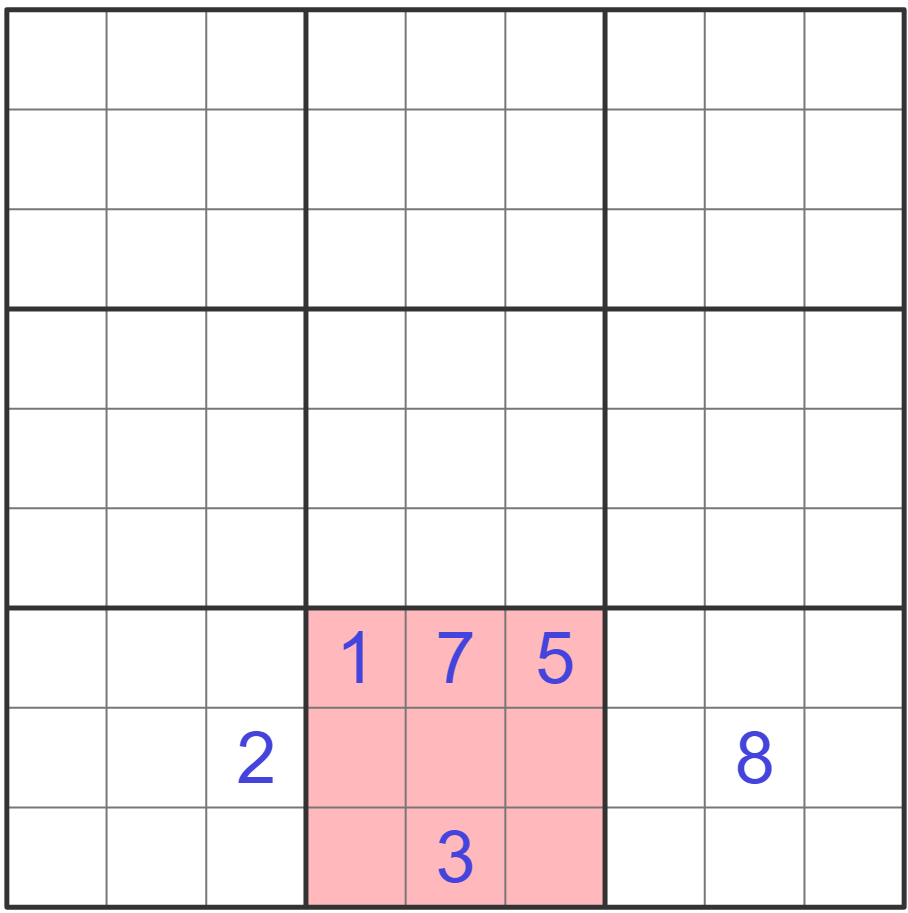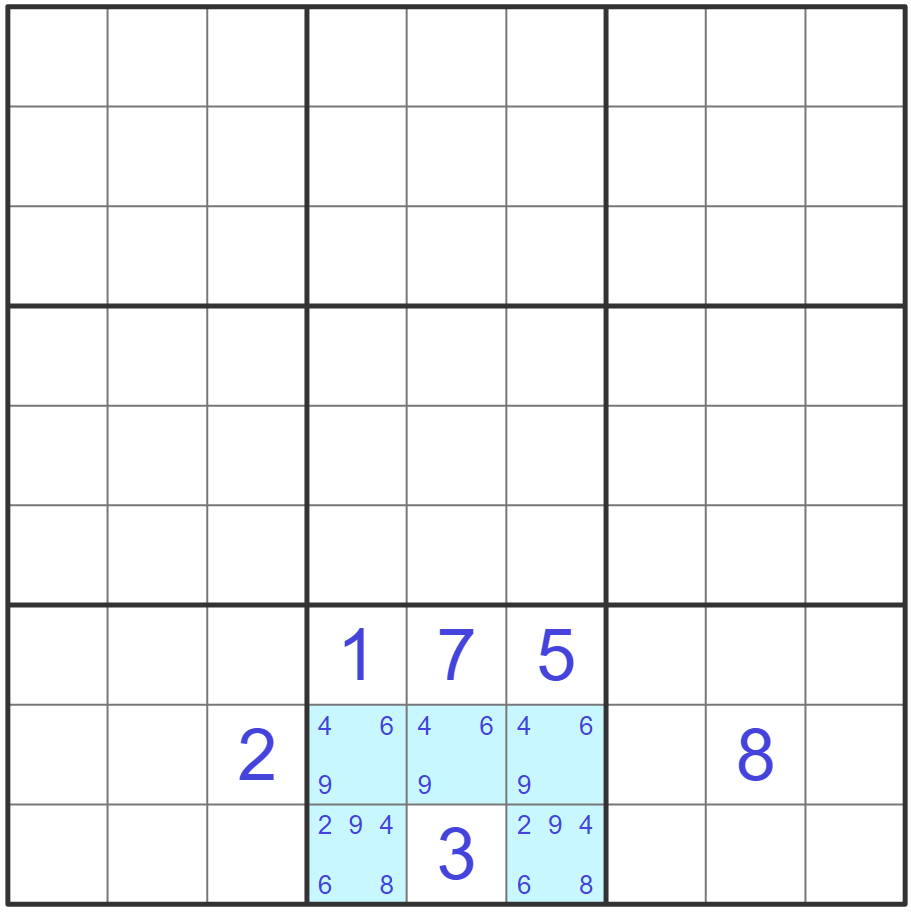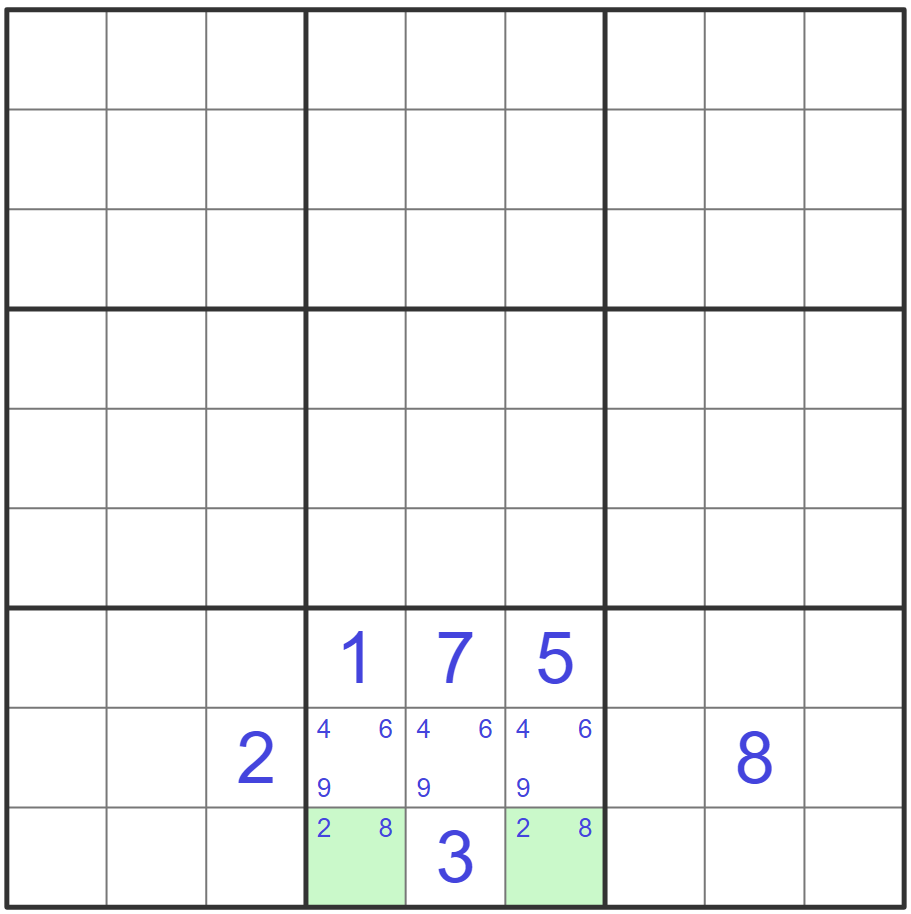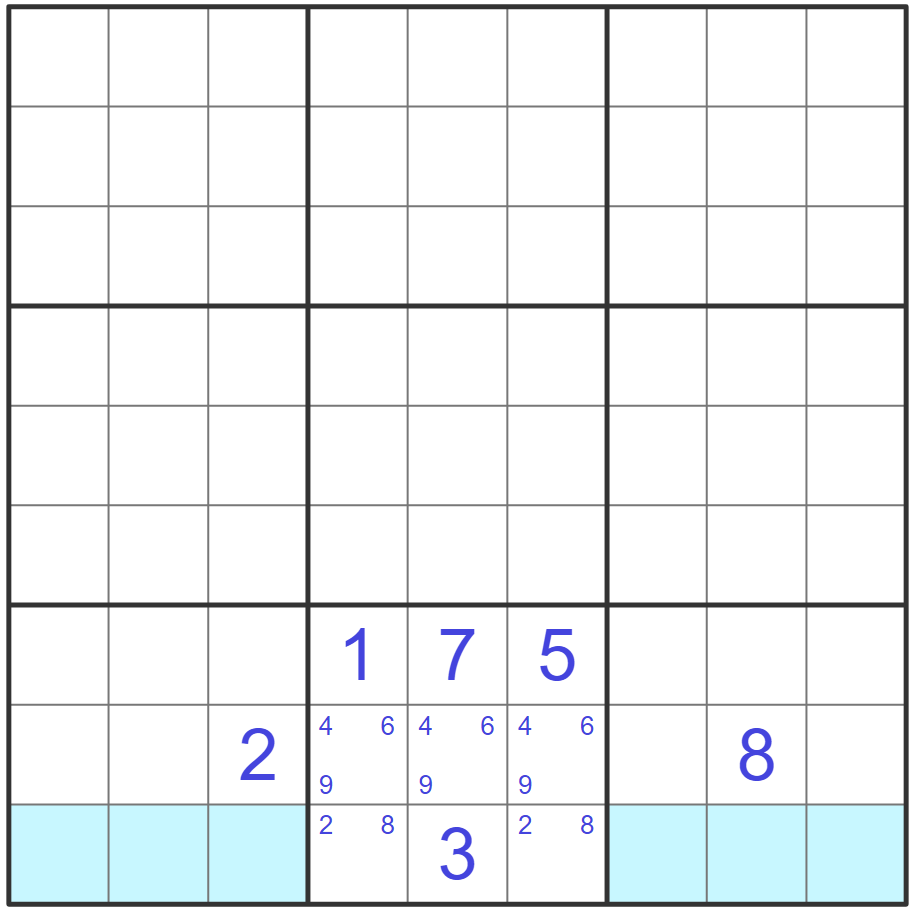Hidden Pair Sudoku Technique
Learning the hidden pair sudoku technique is a great way to start solving more complex sudoku puzzles. If you are getting stuck on intermediate or hard puzzles, this is a good strategy to use.
When to use the hidden pair technique?
This is a good technique to use when you have filled in all of the cells that you can using techniques such as singles. Hidden pairs helps you to start eliminating candidates which reduces the noise and allows you to easily spot other candidates.
What is a hidden pair?
A hidden pair is when a set of two numbers appear as candidates in only two cells within a specific “house” either 3x3 block, row, or column.
Since the cells can contain other candidates, this often hides the pair of candidates, which is why this technique is referred to as hidden pair.
This pair indicates that the cell only has two options since the numbers are unable to go anywhere else in the house.
How to spot a hidden pair
Let’s go over the steps to finding a hidden pair when solving a Sudoku puzzle.
- Start with a house that has many notes to focus on. Either a 3x3 block, row or column.
- Scan through each of the candidates until you find a candidate that is in excalty two cells within the house.
- Look in these two cells to see if there is another number that is only present in these two cells.
- You are now able to remove all other candidates from these two cells that are not the hidden pair.
Hidden pair example
Let’s go over an example and walk you through one step at a time to help understand how the hidden pair technique can be applied.
We will start by focusing on block seven which is highlighed in red on the Sudoku grid below.

Since we need notes to apply this technique, we will enter in all of the possible candidates in this 3x3 block.

We can now see the notes that have been added to the five empty cells that are highlighted in blue. We can start scanning these notes until we find a candidate that is only present in one other cell.
We can see that there is only a two in cells (c4, r9) and (c6, r9). Next we can look at both of these cells to try and find another number that is not present in the other cells of this house. We can see that the number eight is only present in both these cells.
This means that we have found a hidden pair (2,8) in cells (c4, r9) and (c6, r9). Since these cells have to be either a two or eight we can remove the four, six and nine from these two cells.

We can now see that the notes in cells (c4, r9) and (c6, r9) have been reduced to only two candidates. We are also able to remove more candidates based on this hidden pair. For simplicity the notes from the other 3x3 blocks have been removed, but we would be able to eliminte two and eight from any of the cells in r9 highlighed in blue below.

Often times the powerful eliminations that come from finding hidden pairs helps uncover singles that can be filled in or enables other more advanced techniques. When the other candidates in a hidden pair are eliminated the pair now becomes a naked pair.
Hidden pair vs. naked pair
Both a hidden pair and a naked pair are when two cells in a house are the only options for a cell. With a hidden pair the two cells that contain the pair also have other candidates mixed in amoung other candidates. In a naked pair the pair are the only candidates.
Finding these pairs is a good first step in solving sudoku puzzles using more difficult techniques.
Tips for applying the hidden pair technique
- Take more time when scanning the Sudoku grid. This strategy is more advanced than the hidden single technique.
- When looking for hidden pairs start with 3x3 blocks before moving onto rows and columns
Now that you know how to apply this strategy, test it out on one of our Sudoku puzzles!